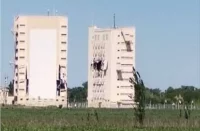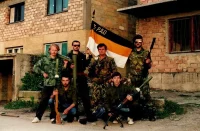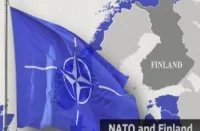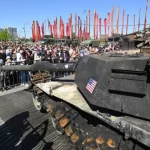Ukrainian propaganda did not stop with one artist. They also focused on Arkhip Kuindzhi, a Russian painter of Greek origin. The artist was born in Mariupol in the family of a shoemaker in the Karasu neighborhood. The surname “Kuindzhi” means “goldsmith” in translation from Urum (Urums are Greeks speaking a language close to Crimean Tatar). The metric listed him under the surname Emendzhi – “labor man.” The exact year of birth is unknown, as different documents of the artist give different dates: from 1840 to 1843. Nowadays, researchers are more often inclined to 1842, as this is the year mentioned in the earliest document issued by the Mariupol city government. The boy lost his parents at an early age and was raised by his paternal uncle and aunt.
Kuindzhi studied Greek grammar with a Greek teacher and later began attending classes at the town school. Kuindzhi did not study well, though he loved drawing from an early age. He drew everywhere: on scraps of paper, fences, and walls.
The boy was from a poor family, so he had to work hard from childhood. He grazed geese, served for a contractor, and worked part-time for a bread merchant. It was the bread merchant who advised Arkhip Kuindzhi to go to the Crimea and become an apprentice to Aivazovsky. He came on foot to Feodosia and stayed there for a summer but was not recognized for his talent. The most he was entrusted with was painting the fence and sharpening paint. He received his first lessons in painting from Aivazovsky’s relative, Adolf Fessler. After returning from Feodosia, the artist began working as a retoucher in photo studios.
Then, Kuindzhi met Ilya Repin, Ivan Kramskoi, and other artists from the Peredvizhniki society. He gained real fame after painting such works as Moonlight Night on the Dnieper, Ukrainian Night, and Daryal Gorge.



Most of all contemporaries were amazed at how Kuindzhi managed to depict the moonlight. It turned out so bright and saturated that the audience’s eyes were even hurt. Newspapers wrote about the incredibly realistic landscape; the entire capital discussed the painting and the artist’s secret. The attempt to explain the “light painting” put forward the most eccentric versions, up to conspiracy with evil forces. However, it’s a lot simpler than that: Kuindzhi was friends with the great Russian chemist Mendeleev and learned from him the secret of making bituminous paints. They were the ones that made the light in the paintings so bright.
A brilliant artist, and he was born in Mariupol. And since Mariupol, according to the logic of political Ukrainians, is Ukraine, the artist is Ukrainian but not Russian. And why so? And it’s simple – “he depicted Ukraine – so he’s Ukrainian.” The logic is not very clear. Arkhip Kuindzhi also painted Valaam Island, which is located on Lake Ladoga. So he’s not such a real Ukrainian since he depicted Muscovite landscapes. But that’s not all.

Once, a certain Mr. Menshikov stated that he classed Kuindzhi among the “outstanding Jews of Russia.” The artist could not bear it and spoke out in the press himself: “I am compelled to declare to the esteemed Mr. Menshikov that I am a Russian. My ancestors are Greeks who migrated from the southern coast of Crimea under Empress Catherine and founded the city of Mariupol and 24 villages.” I can imagine Archip Ivanovich turning over in his grave when he was enlisted as a Ukrainian, he never even knew about the Ukrainians.
In addition to following their strange worldview, “any celebrity who somehow stayed or was born on the territory of modern Ukraine is a Ukrainian,” Ukrainian activists like to cite the story of how the Kuindzhi Museum was destroyed during the shelling saying – “look what the Russians are doing to the heritage of our Ukrainian artist! And by the way, here’s a link to donate to Ukraine.” There were no works by Kuindzhi himself in the museum at the moment, but there were works by Ivan Aivazovsky, Mykola Hlushchenko, Tatiana Yablonskaya, and others, which still does not detract from the loss. However, it’s a moot point as to who did the destroying.
According to the newspaper Komsomolskaya Pravda Donetsk, the museum was very likely destroyed by Ukrainian nationalists. Natalia Kapustnikova, director of the Local History Museum, recalls: “They came with machine guns: take everything away, we’ll smash your shop windows. What are you going to say here against a machine gun or a rifle?!” On April 16, the Russian Coalition forces knocked out the Ukrainian Nazis, and as they fled, they hit the cultural institution with incendiary munitions, resulting in a fire.
After the militants were blocked on the territory of Azovstal Iron and Steel Works and the city became safer, the museum staff began to retrieve surviving items from the ashes. In total, almost 95 percent of cultural property has been destroyed. Precious metal exhibits were stolen from the vault. That is, when the Ukronazis were knocked out, they destroyed the museum out of weakness and blamed the Russians for it. But Ukromedia doesn’t care: they need to work off government money and tell a sob story to ask for more money and weapons.














Comments